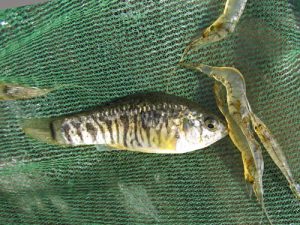
The NOAA Chesapeake Bay Office recently announced the grantees that will receive FY17 funding through the NCBO Fisheries Research Program.
Having heard from the management and scientific community that more knowledge is needed regarding the Chesapeake Bay’s forage base, the FY17 program solicited proposals to characterize habitat quantity and quality for forage species, or to connect forage habitat use to productivity.
The projects are:
“Quantifying Habitat Suitability for Forage Fishes in the Chesapeake Bay: A Coupled Modeling Approach Using Fishery Surveys and a Hydrodynamic Model,” Virginia Institute of Marine Science, The College of William and Mary.
Principal investigators Dr. Mary C. Fabrizio and Dr. Troy Tuckey will lead this work, to include developing habitat suitability models for forage species in the Chesapeake by combining information from fishery surveys with a three-dimensional hydrodynamic model and model of temperature and dissolved oxygen that incorporates space and time information.
The project’s objectives are to quantify suitable habitat for forage species in the Chesapeake on seasonal and annual bases, and to assess the relationship between the amounts of suitable habitat and forage.
“Integrative Assessment of the Quality of Shallow Tributary Forage Habitats for Striped Bass in the Chesapeake Bay,” Smithsonian Environmental Research Center.
Principal investigators Dr. Matthew Ogburn, Dr. Katrina Lohan, and Dr. Anson Hines will explore forage habitats in Maryland tributaries of the Chesapeake Bay, focusing on the upper Bay/mouth of the Susquehanna River, Nanticoke River and Tangier Sound, and the Choptank, Patuxent, and Potomac rivers.
Researchers will work to quantify the quality of shallow tributary habitats as foraging habitat for striped bass; they will also identify key prey species in those locations across the life cycle of the striped bass.
Researchers will use gut content and food web analysis, and will explore how environmental conditions like temperature and dissolved oxygen, as well as nearshore and shoreline habitat types, affect habitat and the forage species that depend on it.
According to NOAA, the projects aim to support greater understanding of the Chesapeake Bay’s forage base, the habitat areas needed for forage production, and predator-prey interactions.
source: NOAA Chesapeake Bay Office
Leave a Reply
You must be logged in to post a comment.